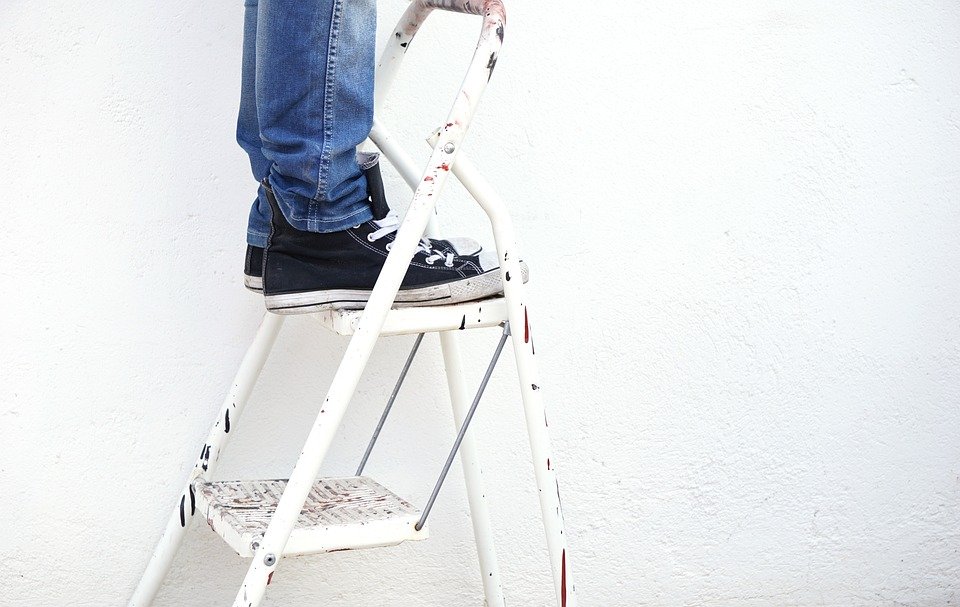**Exploring the Majestic Beauty of Gyeongsangbuk-do’s Bulguksa Temple & Seokguram Grotto**
**Introduction**
South Korea’s Gyeongsangbuk-do province is famous for its rich cultural heritage and breathtaking natural landscapes. Among the many notable attractions in this region, Bulguksa Temple & Seokguram Grotto stand out as iconic sites that showcase the beauty of Korean Buddhism. This article will take you on a virtual journey to these majestic locations, providing detailed information about their history, architecture, nearby places to explore, and transportation options. Let’s delve into the enchanting world of Bulguksa Temple & Seokguram Grotto!
**1. Bulguksa Temple: A Tranquil Oasis**
Bulguksa Temple, located in Gyeongju, is a UNESCO World Heritage site and one of Korea’s most renowned temples. Built in the 8th century during the Silla dynasty, it is a masterpiece of Buddhist architecture. The temple complex comprises various halls and pagodas, each offering a unique spiritual experience.
**1.1 History of Bulguksa Temple**
Bulguksa Temple was constructed by the Silla dynasty’s government officials, Kim Daeseong and Park Hogyu, in 751. Originally named “Hwaeom Bulguksa Temple,” it was dedicated to the propagation of Buddhism and the welfare of the people. The temple has undergone reconstruction several times due to fires and invasions, but its essence has remained intact throughout history.
**1.2 Architectural Marvels: Exploring the Temple Grounds**
The temple complex is divided into the Lower and Upper sections, each offering distinctive features. The Lower Bulguksa Temple houses various halls, including the Daeungjeon Main Hall, Geungnakjeon, Museoljeon, and Birojeon. The magnificent Daeungjeon Main Hall is the centerpiece of the complex and holds several treasures of Korean art.
**1.3 A Spiritual Retreat: Experiencing Temple Life**
Visitors to Bulguksa Temple have the opportunity to partake in various cultural experiences and activities. You can try the traditional tea ceremony, engage in meditation sessions, or participate in Buddhist rituals. These immersive experiences provide insight into Korean Buddhism and allow for a deeper understanding of the temple’s significance.
**2. Seokguram Grotto: A Journey to Enlightenment**
Located on Mount Toham in Gyeongju, Seokguram Grotto is a mesmerizing hermitage and an important Buddhist pilgrimage site. This ancient rock-cut temple contains a granite statue of Buddha, captivating visitors with its serene aura and intricate craftsmanship.
**2.1 History of Seokguram Grotto**
Seokguram Grotto was built in the 8th century by the Silla dynasty’s architect, Kim Daeseong, under the patronage of King Gyeongdeok. It was intended to be a sacred space for Buddhist worship and meditation. The grotto was hidden and forgotten until its rediscovery in the 20th century.
**2.2 Discovering the Grotto: Marvels of Artistry**
The main attraction of Seokguram Grotto is the granite statue of Buddha, known as “Seokgamoni Bulguksa,” seated on a lotus pedestal. This intricately carved statue is a prime example of the perfection attained in Silla Buddhist art. The serene expression and delicate features of the statue evoke a sense of tranquility and spiritual awakening.
**2.3 A Scenic Hike to Enlightenment: Accessing Seokguram Grotto**
To reach Seokguram Grotto, one must embark on a picturesque hike through Tohamsan Mountain. The trail offers breathtaking views of the surrounding nature and glimpses of ancient stone markers and pagodas. It is recommended to wear comfortable footwear and carry water and snacks for the journey.
**3. Nearby Places to Explore**
While visiting Bulguksa Temple & Seokguram Grotto, why not extend your exploration to nearby attractions? Here are some suggestions to enhance your trip:
**3.1 Yangdong Village**
Located near Gyeongju, Yangdong Village is a traditional Korean village that offers a glimpse into the country’s rural past. With its well-preserved hanok (traditional Korean houses), scenic surroundings, and cultural activities, it is an excellent destination to immerse yourself in traditional Korean culture.
**3.2 Gyeongju National Museum**
Known as the “Museum Without Walls,” Gyeongju National Museum houses a vast collection of artifacts and relics from Silla’s glorious past. Explore the museum’s exhibition halls to learn about the region’s history, art, and culture through a fascinating display of archaeological treasures.
**4. Places of Similar Charm**
If you are enchanted by the serene atmosphere of Bulguksa Temple & Seokguram Grotto, you may also find these places captivating:
**4.1 Buseoksa Temple**
Located in Yeongju, Buseoksa Temple is another significant temple of the Silla period. Its stunning architecture, scenic surroundings, and tranquil ambience make it a must-visit destination for those seeking spiritual solace and a deeper connection with nature.
**4.2 Haeinsa Temple**
Situated in Hapcheon, Haeinsa Temple is renowned for housing the Tripitaka Koreana, a UNESCO World Heritage collection of Buddhist scriptures. The temple’s serene setting amidst dense forests and picturesque mountain views provides a peaceful retreat for meditation and reflection.
**Conclusion**
Bulguksa Temple & Seokguram Grotto offer an extraordinary glimpse into Korea’s spiritual and cultural heritage. This article aimed to provide a comprehensive guide to these remarkable sites, from their historical significance to architectural marvels and nearby attractions. Whether you seek enlightenment, tranquility, or a deeper understanding of Korean Buddhism, a visit to Bulguksa Temple & Seokguram Grotto will be an unforgettable experience.
**FAQ**
1. What is the entrance fee for Bulguksa Temple & Seokguram Grotto?
– Bulguksa Temple: The entrance fee is 5,000 KRW for adults and 3,000 KRW for children.
– Seokguram Grotto: The entrance fee is 4,000 KRW for adults and 2,500 KRW for children.
2. How can I reach Bulguksa Temple & Seokguram Grotto?
– From Gyeongju Intercity Bus Terminal, take Bus No. 10 or 11 to Bulguksa Temple.
– Seokguram Grotto is accessible from Bulguksa Temple by a short uphill hike or by taking a taxi.
3. Are there any restrictions for visitors at Bulguksa Temple & Seokguram Grotto?
– Visitors are advised to dress modestly and respectfully, as these sites are places of worship.
– Photography is allowed, but flash photography is prohibited inside the halls.
プルクサ寺と石窟庵の壮大な美しさを探索する
**はじめに**
韓国の慶尚北道は、豊かな文化遺産と息をのむような自然景観で有名です。その中でも、ブルグクサ寺と石窟庵は、韓国仏教の美しさを見せる象徴的な場所として際立っています。この記事では、ブルグクサ寺と石窟庵の歴史、建築、周辺の観光地、交通手段について、詳細な情報を提供します。ブルグクサ寺と石窟庵の魅力に浸りながら、魅惑の世界に飛び込んでみましょう!
**1. ブルグクサ寺:静寂なオアシス**
ブルグクサ寺は、慶州に位置するユネスコ世界遺産であり、韓国でも最も有名な寺院の一つです。8世紀に新羅の時代に建てられたこの寺院は、仏教建築の傑作です。寺院の複合施設には、さまざまな堂や塔があり、それぞれが個別の霊的体験を提供します。
**1.1 ブルグクサ寺の歴史**
ブルグクサ寺は、751年に新羅時代の政府高官である金大成と朴鎬漁によって建設されました。当初は「華厳ブルグクサ寺」と呼ばれ、仏教の普及と人々の幸福を祈るために建てられました。寺院は、火災や侵略による再建を何度か経験しましたが、その本質は歴史を通じて変わることはありませんでした。
**1.2 建築の驚異:寺院の敷地を探索する**
寺院の複合施設は、下寺と上寺の2つの部分に分かれており、それぞれ独自の特徴を提供しています。下寺には、大雄殿(メインホール)、近難殿、無異殿、尾牢殿などのさまざまな堂があります。壮大な大雄殿は、寺院の中心であり、韓国の美術の数々の財宝を保管しています。
**1.3 精神的なリトリート:寺院生活を体験する**
ブルグクサ寺を訪れる人々は、さまざまな文化体験や活動に参加する機会を得ることができます。伝統的な茶道を試したり、瞑想セッションに参加したり、仏教の儀式に参加したりできます。これらの没入型体験は、韓国の仏教に対する洞察を提供し、寺院の意義をより深く理解する機会を与えてくれます。
**2. 石窟庵:悟りへの旅**
慶州の高岳山に位置する石窟庵は、迷人な隠修院であり、仏教の巡礼地でもあります。この古代の岩窟寺院には、仏陀の花崗岩の像があり、その静けさと繊細な工芸品で訪れる人々を魅了します。
**2.1 石窟庵の歴史**
石窟庵は、8世紀に新羅時代の建築家金大成によって建てられ、景徳王の庇護のもとで建設されました。それは仏教の崇拝と瞑想のための神聖な空間として意図されていました。この窟は、20世紀に再発見されるまで隠れて忘れられていました。
**2.2 窟の探索:芸術の驚異**
石窟庵の主な見どころは、蓮の台座に座る「石窟庵普賢菩薩(セオッカモニ・ブルククサ)」として知られる花崗岩の仏像です。この繊細に彫られた像は、新羅仏教美術の完璧さの典型的な例です。像の静かな表情と繊細な特徴は、平穏さと霊的な覚醒を思わせます。
**2.3 悟りへの絶景ハイキング:石窟庵へのアクセス**
石窟庵に行くには、高岳山を経由して絶景のハイキングを楽しむ必要があります。この道は周囲の自然の美しさと古代の石碑や塔の一部を見ることができます。快適な靴を履き、旅の途中で水や軽食を持参することをおすすめします。
**3.周辺の観光地**
ブルグクサ寺と石窟庵を訪れる際には、周辺の観光地も探索してみませんか?以下は、旅を充実させるためのいくつかの提案です:
**3.1 洋洞村**
慶州の近くに位置する洋洞村は、韓国の田園地帯の過去を偲ばせる伝統的な村です。保存状態の良い韓屋(伝統的な韓国の家)や景色の良い周辺環境、文化活動などがあり、伝統的な韓国文化に没入する絶好の場所です。
**3.2 慶州国立博物館**
「壁のない博物館」として知られる慶州国立博物館は、新羅の栄光の過去を物語る多くの文化財や遺物を展示しています。博物館の展示ホールを探索して、考古学的な宝物の展示を通じて地域の歴史、芸術、文化について学びましょう。
**4. 類似の魅力ある場所**
ブルグクサ寺と石窟庵の静謐な雰囲気に魅了された場合、以下の場所も魅力的に感じるかもしれません:
**4.1 仏色寺(ブソクサ)**
慶北地域に位置する仏色寺は、新羅時代のもう一つの重要な寺院です。見事な建築物、美しい景色、静穏な雰囲気が、精神的な



